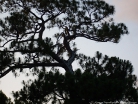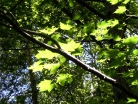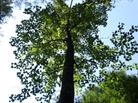
Custom Search
Zanthoxylum clava-herculis L., Hercules' Club



Thursday, June 12, 2025

™

Want to add your tree to our picture gallery? Click here for details!
Tree lists:
•A-Z by scientific
name
•A-Z by common
name
•By Family
For state A-Z list click state name below.
•A-Z by scientific
name
•A-Z by common
name
•By Family
For state A-Z list click state name below.
-Color denotes a tree that is rare or endangered


Image Gallery
|
|
|
|
|
| A-Z scientific | ||
| A-Z by Common Name | ||
| Families | ||
| Browse by State | ||
| Rare or Endangered Species | ||
| Trees_with_Special_Uses | ||
| Tallest and Biggest |
| Aceraceae Maple Family | ||
| Anacardiaceae Sumac Family | ||
| Annonaceae Custard Apple Family | ||
| Aquifoliaceae Holly Family | ||
| Arecaceae, Palm Family | ||
| Betulaceae Birch family | ||
| Bignoniaceae Trumpet Creeper Family | ||
| Burseraceae Frankincense Family | ||
| Caprifoliaceae Honeysuckle Family | ||
| Chrysobalanaceae Coco-plum Family | ||
| Cornaceae Dogwood Family | ||
| Cupressaceae Cypress Family | ||
| Cyrillaceae Cyrilla Family | ||
| Ebenaceae Ebony Family | ||
| Ericaceae Heath Family | ||
| Fabaceae Pea Family | ||
| Fagaceae Beech Family | ||
| Hamamelidaceae Witch Hazel Ffamily | ||
| Hippocastanaceae Horse Chestnut Family | ||
| Juglandaceae Walnut Family | ||
| Lauraceae Laurel Family | ||
| Leitneriaceae Corkwood Family | ||
| Magnoliaceae Magnolia Family | ||
| Meliaceae Mahogany Family | ||
| Moraceae Mulberry Family | ||
| Myricaceae Bayberry Family | ||
| Myrsinaceae Myrsine Family | ||
| Myrtaceae Myrtle Family | ||
| Nyctaginaceae Four Oclock Family | ||
| Olacaceae Olax Family | ||
| Oleaceae Olive Family | ||
| Pinaceae Pine Family | ||
| Platanaceae Plane Tree Family | ||
| Polygonaceae Buckwheat Family | ||
| Rhamnaceae Buckthorn Family | ||
| Rosaceae Rose Family | ||
| Rubiaceae Madder Family | ||
| Rutaceae Rue Family | ||
| Salicaceae Willow Family | ||
| Sapindaceae Soapberry Family | ||
| Sapotaceae Sapodilla Family | ||
| Simaroubaceae Quassia Family | ||
| Styracaceae Storax Family | ||
| Symplocaceae Sweetleaf Family | ||
| Theaceae Tea Family | ||
| Tiliaceae Lindon Family | ||
| Ulmaceae Elm Family | ||
| Taxaceae Yew Family | ||
| Yucca Family |
| Maple A-Z |
| sumac_family_a-z |
| custard_apple_family_a-z |
| holly_trees_a-z |
| palm_family_a-z |
| birch_family_a-z |
| trumpet_creeper_family_a-z |
| honeysuckle_family_a-z |
| dogwood_family_a-z |
| cypress_family_a-z |
| heath_family_a-z |
| pea_family_a-z |
| beech_family_a-z |
| walnut_family_a-z |
| magnolia_family_a-z |
| olive_family_a-z |
| rose_family_a-z |
| willow_family_a-z |
| franklinia |
| elm_family_a-z |
| Federal List | ||
| State Lists | ||
| Invasive_species |
| Restoration of the American Chestnut | ||
| Restoration of the American Elm | ||
| Sustainable Forestry |
| Contact Us | ||
| Our Contributors | ||
| Photo of the Month | ||
| Usage Requirements | ||
| FAQ | ||
| Report a Broken Link |
| photo_submission |
| Photo Store |






Zanthoxylum clava-herculis has
distinct bark, which is covered with
thick knobby to spiked protrusions or
teeth.
Van Zandt Co., Texas
©2012 TreesForMe Original Image.
See usage requirements.
A younger Hercules Club trunk with
sharp thorny growths is well defended
against animal predation.
Tarrant Co., Texas
©2012 TreesForMe Original Image.
See usage requirements.
Where there aren't teeth, Zanthoxylum
clava-herculis bark is rough and ashy
brown to orange brown.
Van Zandt Co., Texas
©2012 TreesForMe Original Image.
See usage requirements.
The knobs may stick out as far as 1 to 1.5 inches and may grow in what look like vertical ridges (left) or like a single tooth (center and right).
They may be flattened on top (right), rounded on top (center) or spiked (right) or a combination of all three on the same tree. This gruesome
appearance has earned this species the name Hercules club, but it is for the bark's ability to cause numbing of the mouth when chewed that
gave rise to the moniker of tooth ache tree.
Tarrant Co., Van Zandt Co., Texas
©2012 TreesForMe Original Image.
See usage requirements.
Zanthoxylum clava-herculis is a deciduous
tree found from the Atlantic shores of North
Carolina west to Texas and Oklahoma and
south throughout the Gulf states.
Van Zandt Co., Texas
©2012 TreesForMe Original Image.
See usage requirements.
Young Hercules club tree trunks have
small teeth beginning to grow at the
trunk base.
Van Zandt Co., Texas
©2012 TreesForMe Original Image.
See usage requirements.
Zanthoxylum clava-herculis is a member of
the prickly ash genus, which is in the Rue
family.
Van Zandt Co., Texas
©2012 TreesForMe Original Image.
See usage requirements.
Zanthoxylum clava-herculis, Hercules Club
Van Zandt Co., Texas
©2012 TreesForMe Original Image.
See usage requirements.

A younger Hercules Club trunk with knobs
going all the way up the trunk into the canopy.
Tarrant Co., Texas
©2012 TreesForMe Original Image.
See usage requirements.














